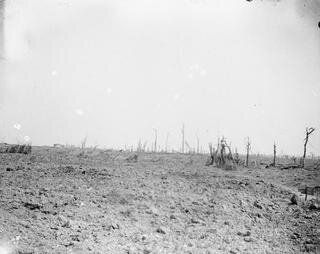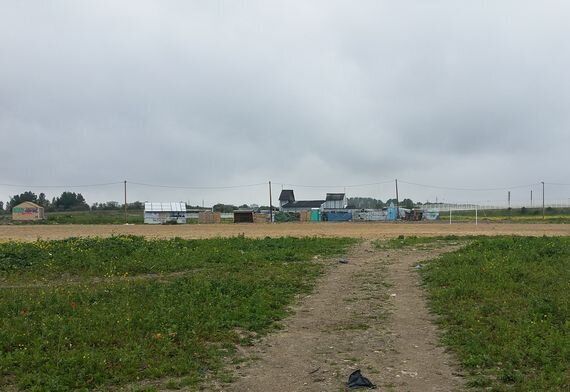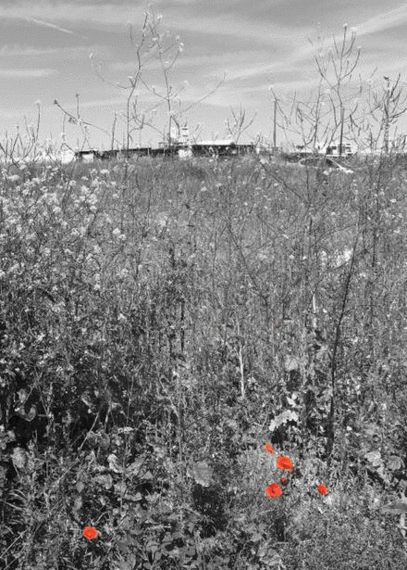Exactly one hundred years ago, one of the most successful ever British films was released.
It would take a pub quiz genius to come up with this particular piece of trivia, however. Forget Titanic or Avatar or even Gone with the Wind.
Half the population of Britain - some 20 million people - saw The Battle of the Somme in the weeks following its first screening at the Scala Theatre on 10th August 1916. The film combined real footage and some reconstructed scenes, and had a dramatic impact on a population unused to viewing the realities of war. Designed as a public information and propaganda film by the War Office, the piece came in for criticism for its brutal display of death, mild by the standards of today. It brought a new audience to cinemas, the middle classes, who were attracted by the documentary nature of the film but then appalled at having the reality of violence laid out unforgettably before them.

When the soil on the edge of Pas-de-Calais region in France began to receive the blood of soldiers, no-one knew the battle would become one of the worst in human history. More than one million people were killed or wounded in the Battle of the Somme, which was to continue until November 18th 1916. The land was devastated; buildings, trees, landmarks all decimated. James McConnell, an American pilot, described the land from the air as "a strip of murdered Nature... like chalk wiped from a blackboard".
This colourless, lifeless landscape did not remain so for long. Nature and humans are quick to re-establish themselves. Farmers needed to use the land. Symbolic of all the spilt blood, it was noted how fast poppies began to grow on the battlefields, and this red flower quickly became established as our ubiquitous symbol of remembrance.
Remembrance? Really?
The allies were fighting for freedom from the oppression of a fascist state that believed in the supremacy of certain races over others. For a return to the greater stability of peacetime, with better living conditions and enough resources for all.
Yet in the Pas-de-Calais today, there exists a large area of land churned up by rubber bullets, tear gas and earth movers, deep with filthy mud in winter and swept with stinging dust in summer. The land is occupied by 9,000 people fleeing terrible regimes who are now living in abject squalor, short of food, shelter and medical care. They are subject to regular attack from fascists and from a police force that appears to be firmly in the pocket of these neo-Nazis; the land once more receives their blood.
This is no reconstruction, no battlefield simulation. The Calais 'Jungle' refugee camp endures, with no hope in sight of a solution. With constant threats of eviction, but with no viable alternatives offered, residents exist in a no-man's land, with no possibility of going either back or forward.
coughing like hags, we cursed through sludge,
Till on the haunting flares we turned our backs
And towards our distant rest began to trudge.
Men marched asleep. Many had lost their boots,
But limped on, blood-shod. All went lame; all blind;
Drunk with fatigue; deaf even to the hoots
Of gas-shells dropping softly behind
When Wilfred Owen penned 'Dulce et Decorum Est' he could not have known just how pertinent this every word would be to a humanitarian disaster 20 miles from Britain in 2016. The mud, the pervasive 'Jungle Lungs' cough, the nightly exhausted march of many hours, the barefoot refugees who have their shoes taken by the police. Yes, we have all had to "watch the white eyes writhing in his face" as another refugee collapses from the constant tear gas attacks.
The violent destruction of half the camp by police authorities in February and March was, as expected, a pointless move. The refugees who lost their homes mostly had no choice but to move into the other half of camp. Conditions have therefore become even more cramped and difficult, but considering this sudden upheaval, these communities - from utterly different parts of the world, who have never previously lived side by side - are coping. The problems the camp faces, including fire, hygiene and disease, have naturally been exacerbated by the loss of space.
Meanwhile, the bleak sandy no-man's land left behind after the eviction has remained empty. The church, perhaps the most well-known Jungle symbol of all, has been left standing along with Jungle Books and a school in the wasteland, looking like buildings which miraculously emerge from devastating hurricanes or tsunamis unscathed.

The debris left behind on the cleared area was astounding. Empty tear gas canisters mixed with broken French chateau tiles from some long-forgotten residence. Rubber bullet casings, charred Qur'an pages, a teddy bear, a piece of farm machinery and stiletto shoes. The detritus of collided worlds and mingled cultures.
Such a vast area of stark emptiness was a painful reminder of waste - wasted land, wasted effort, wasted lives. And so, as I went about my daily business in camp and across the no-man's land, I started dropping poppy seeds everywhere I went. I filled my pockets and sprinkled them gradually, one million seeds in total, zigzagging across the open space and throughout the narrow alleyways between tents and shelters.
I did not expect them to grow. Not only were the seeds lying on hard, unforgiving land - either sand or heavy impenetrable clay filled with rubbish - but the ground in the Jungle is toxic, lest we forget. The site is listed as an area that contains dangerous substances and could pose a serious health hazard. The chemicals used at the huge plants next to the Jungle are toxic to humans and to the environment. Yet this condemned land is apparently good enough for 9,000 souls to exist upon.
Recently, while I was in the UK, someone suddenly put up pictures online of poppies growing in the Calais Jungle, especially across no-man's land. Nature had found its way through, as it always does.
Harry Leslie Smith is a man who knows. When I took the famous 93-year-old veteran, writer and campaigner round the Calais camp last autumn, he described the conditions as worse than post World War II refugee camps. Mr Smith famously renounced the wearing of a November poppy a couple of years ago, unhappy with the politicisation of the symbol and its use to justify current conflicts.
Poppies are our flower of remembrance. They should remind us that not far from the Calais Jungle, one million people shed blood for a world free from oppression and racial supremacy. But crucially, poppies should also direct our current and future actions. Here we are, one hundred years later, condemning men to live in fear and despair. We are now receiving the casualties of war with yet more violence and deprivation. What is the point in remembering but repeating the actions that created the horror last time?
Remembrance without the application of lessons learnt is insulting. 'For their tomorrow, we gave our today', far from being a nostalgic epitaph that prompts our thanks and relief, should shame us into considering what we have failed to do with that legacy. It is tokenistic, self-gratifying and hollow, to participate in remembrance without working against that same evil that still exists.
When audiences were shocked, one hundred years ago, at seeing the realities of war, it provided new impetus to bring the situation to an end. These days, apparently, we are so immune to images of violence that they no longer bring us to our knees. As the Jungle population approaches 10,000, what new horrors will it take to finally instigate change?
